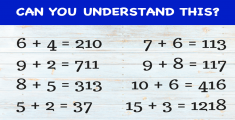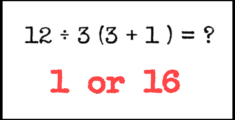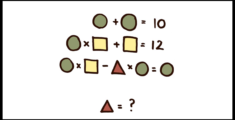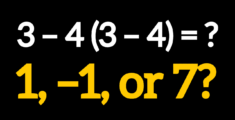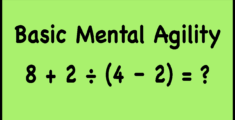When tasked to solve simple addition questions, you can easily laugh them off and push them aside as child’s play. However, when these seemingly equations are twisted a bit and some logical reasoning attached to them, they baffle even mature adults.
Therefore, before you conclude how easy such sums are, you should give them a second thought. Here is one such equation that requires you to practice logical thinking besides simple addition knowledge.
Here we go:
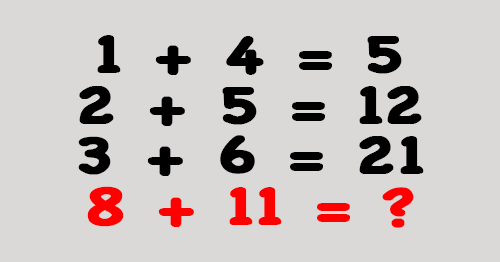
Things get confusing from the second equation. Here’s how to go about the challenge.
The Solution
This is how to break this down seamlessly:
The first equation is a no-brainer: 1 + 4 = 5, no problem with that.
The second equation, 2 + 5, should equal 7. But that’s not what we are having here. Instead, we are taking that seven and adding it to the answer from the first equation (5) to get the answer to the second equation. That’s why in the 2nd equation, 2 + 5 equals 12 and not 7!
Use the same formula for the second equation to get 3 + 6 = 9, then add 12 to 9 and get 21.
For the last equation, therefore, the answer will be 8 + 11 = 19.
Then take 19 and add to 21,
The correct answer is 40!
But that’s not the only correct answer. There’s still another way to solve this equation. So, if the answer you got isn’t covered yet, don’t worry.
In the second formula, we bring in the multiplication effect.
The first sum remains as it is i.e., 1 + 4 = 5.
After the first sum, things change. You will now have to multiply the second number in the equation with the first one, i.e., 2 + 5 (x 2) = 12.
The next one will be: 3 + 6 (x 3) = 21
The final equation now will be: 8 + 11 (x 8) = 96
So, the second correct answer is 96!
Whether you got 40 or 96, you were right, and bravo! However, the fun of this challenge is in challenging others to try it. So, go ahead and share it with friends and see how they perform.


